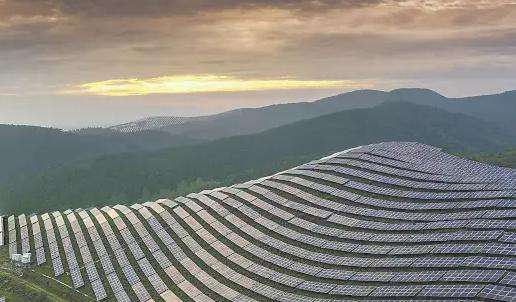1. Small power generation equipment
(1) Small power supplies ranging from 10 to 100 W are used for military and civilian life in remote areas without electricity, such as plateaus, islands and pastoral areas. zones, border posts, etc. Such as lighting, television, radio, etc. ;
(2) 3-5KW domestic rooftop grid-connected power generation system;
(3) Photovoltaic water pump: solves the problem of drinking water from deep wells in areas without electrical irrigation.
2. Transportation fields such as navigation beacon lights, road/railroad signal lights, warning/signal lights, Yuxiang street lights, high altitude obstacle lights, highway/wireless telephone booths railways, power shifting without supervision. supply, etc
3. Domain of communication/communication: unattended solar microwave relay station, optical cable maintenance station, broadcast/communication/messaging power supply system; rural operator telephone photovoltaic system, small communication machine, soldier GPS power supply, etc. .
4. Oil, marine and meteorological fields: cathodic protection solar energy systems for oil pipelines and reservoir valves, standby and standby power supplies for oil drilling platforms, ocean sensing equipment, observation equipment meteorological/hydrological, etc. .
5. Power supply for home lighting: such as garden lights, street lights, portable lights, camping lights, climbing lights, fishing lights, black light lights, rubber tapping lights, energy saving lamps, etc.
6. Photo plantsovoltaics: independent photovoltaic power plants from 10 KW to 50 MW, complementary wind and solar (diesel) power plants, various charging stations for large parking power plants, etc. 7. Solar buildings combine solar power generation with building materials to enable large-scale buildings to become electricity self-sufficient, which is a major development direction for the future.
8. Other fields include: (1) Automotive support: solar cars/electric cars, battery charging equipment, car air conditioners, fans, cold drink boxes, etc. (2) Solar hydrogen regeneration; production and fuel cells Energy production system; (3) Power supply for seawater desalination equipment (4) Satellites, spacecraft, space solar power plants, etc.
In terms of system constructionPure em, water photovoltaic systems are mainly divided into water pile type and water floating platform type.
1. Since the construction of the foundation of the water pile photovoltaic system is more difficult, the cost will also increase to a certain extent. (For example, pump water, then drive the stakes down, then fix the bracket)
2. The advantages and disadvantages of floating water photovoltaics are as follows:
1. the advantages are as follows:
< p>①Save land use: Built on water, it does not occupy land resources and can reduce land acquisition costs.② Increase power generation: Water has a cooling effect on photovoltaic modules, which can suppress the increase in surface temperature of modules, thereby achieving power generation higher. According to a comparative analysis of real experiencesUsed in a large-scale floating photovoltaic power plant in Hyogo Prefecture, Japan, the panel's electricity output increased by about 14% due to the cooling effect of the water surface.
③ Reduce evaporation and algae reproduction: Covering solar panels on the water surface can theoretically reduce water evaporation and inhibit algae reproduction in water, which is beneficial for the protection of water resources.
④Easy operation and maintenance: Photovoltaic power plants are built in water, which can reduce dust pollution on the components, and it is convenient to clean the components. At the same time, it is difficult for idle people and animals to access the components, which can effectively prevent people and animals from damaging the components.
⑤ Tourist advantages: careful photovoltaic modulesEasily arranged on the vast water surface can be used as a unique attraction and become a landscape in the area, bringing tourism benefits.
⑥ Avoid shading of modules: Compared with land, the water surface is relatively open, which can effectively prevent modules from being blocked by mountains, woods, etc. . The solar irradiation area is uniform and the lighting duration is long.
⑦ Reduce the cost of the tracking system: The angles and spacing of the components are consistent, making it easier to install and operate the solar tracking system. There is no need to install a two-axis tracking system for each. solar panel, which greatly reduces the cost of the tracking system.
⑧Cost saving: No foundation and component supports are required, saving the cost of foundation and supports and reducing costs.
⑨ ConsConvenient consumption: Built in waters near villages and towns, it can be consumed nearby, reducing adverse factors such as network connection difficulties and power outages, and improving efficiency.
2. There are some disadvantages:
① High requirements for floating equipment: floating water photovoltaics requires floating equipment to support the photovoltaic panels, and the floating frame has corrosion resistance, low density , and frost heave resistance, wind and wave resistance, service life, bearing capacity, etc. must all be high.
② High requirements for site selection: the site of the floating water photovoltaic farm should be selected in a location with a large area, stable runoff, low wind speed, good water conditions. lighting, slight changes in water level, goodhe conditions for development, and no large-scale navigation, ecologically non-sensitive areas and other waters.
③There are many uncertain factors: strong winds, water level, ice and other factors have a greater impact. At the same time, it is necessary to monitor whether photovoltaic modules have adverse effects on water. quality, fish, plants, etc.
④ Construction difficulty: Many factors need to be considered during the construction process. It is difficult to use a large number of heavy machines for high-efficiency construction in water operations. The process requirements are relatively higher. and the construction period is also increased accordingly. There are many jobs that require diving or being on a boat. Balance and safety must be considered during operations on board, and facilities tthey that swimming pools and dams must not be damaged.














